




Ramps, typically used for building access, are often provided on trails.
by Stuart Macdonald, Trail Consultant, American Trails
Ramps have a specific definition for building access in the ADAAG, "Accessibility Guidelines for Buildings and Facilities". The maximum slope of a ramp is 1:12, the maximum rise for any run is 30 inches, and the minimum clear width of a ramp is 36 inches. Level landings are also required at top and bottom of each ramp run.
There can be good reasons to use these designs on urban trails, but ramps are not required in the proposed Accessibility Guidelines for trails. The Final Report on "Accessibility Guidelines for Outdoor Developed Areas" noted that "Because the terrain in outdoor environments is often steep, the committee realized that applying current ADAAG slope and ramp requirements was not feasible." Likewise, handrails are not required on trails but are required on architectural ramps that rise more than 6 inches or are longer than 72 inches.
See examples below used in specific trail situations.

Engineered ramp along vertical wall brings pedestrians and bikers from sidewalk along Speer Blvd down to Cherry Creek Trail, Denver
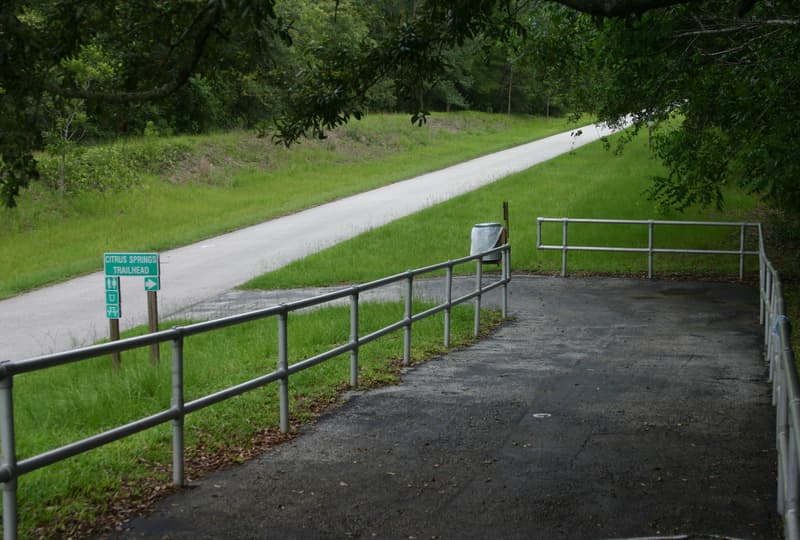
Ramp leads visitors from parking lot down the slope to rail trail, on Withlacoochie State Trail, Florida; July 12, 2009
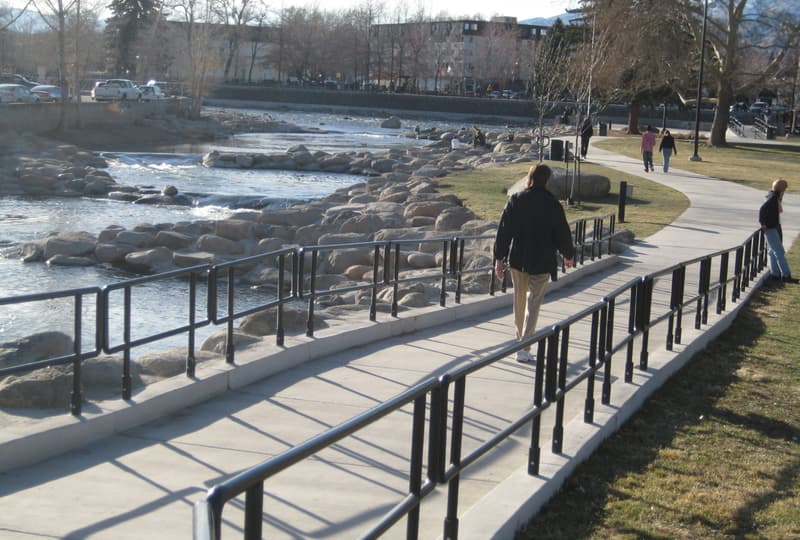
Ramp in downtown Reno, Nevada to trail along Truckee River; note level landing above pedestrian; March 9, 2008
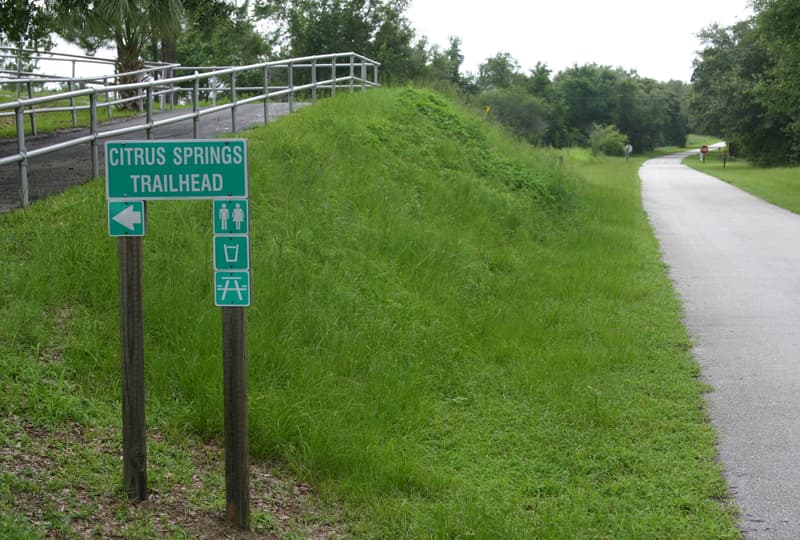
Looking from top of ramp down the slope to Citrus Springs trailhead on the Withlacoochie State Trail, Florida
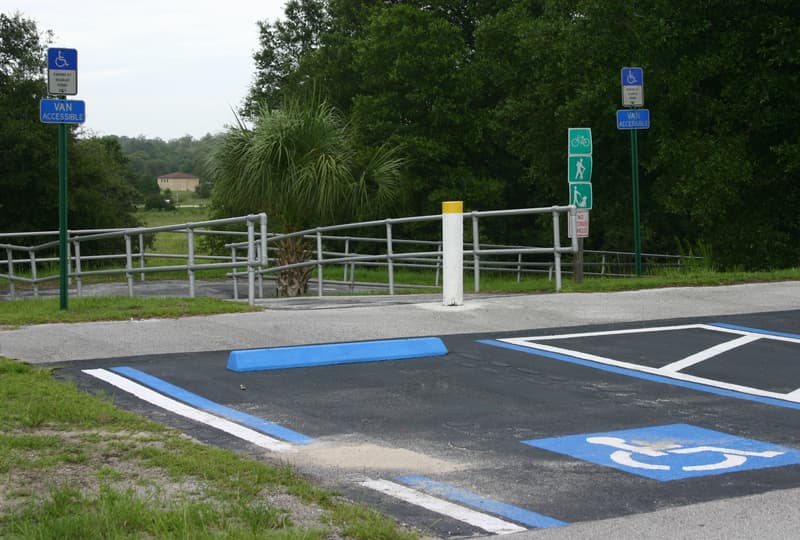
Accessible parking place with ramp in background at Citrus Springs trailhead on Withlacoochie State Trail, Florida
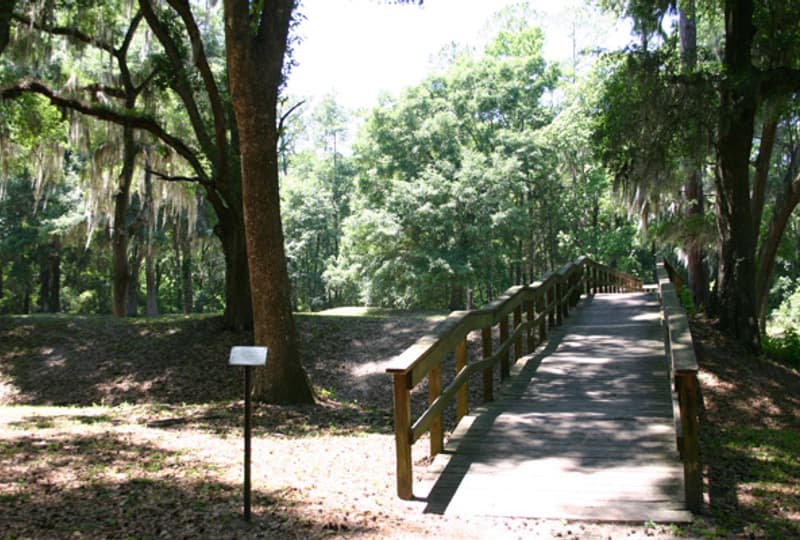
Wood walkway provides accessible route from main trail to river overlook, Suwannee River Wilderness Trail
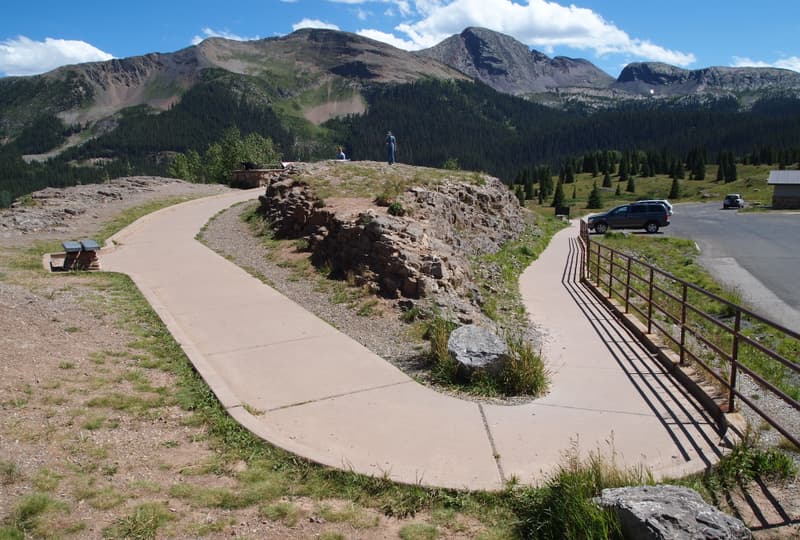
Trail to overlook at Molas Pass on the Colorado Trail; note handrail only along slope above parking lot
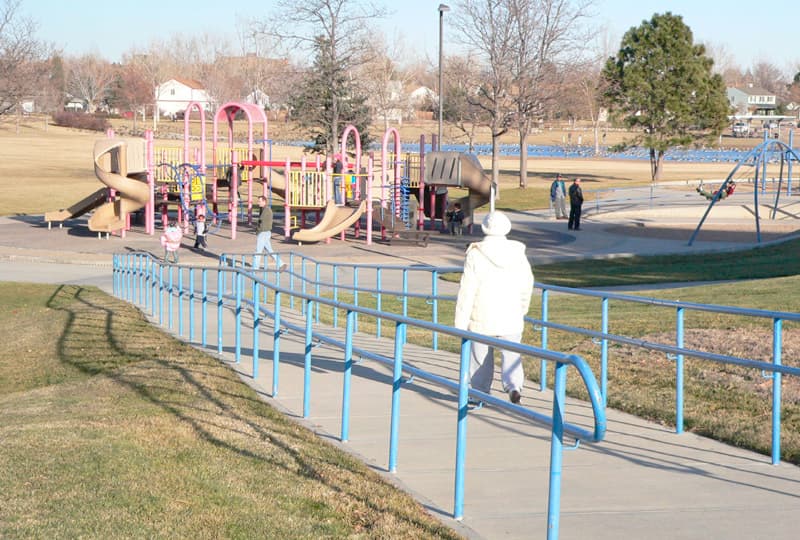
Ramp used in a park with handrails following building standard rather than more appropriate Accessible Recreation Route guidelines which would omit railings, Aurora, Colorado
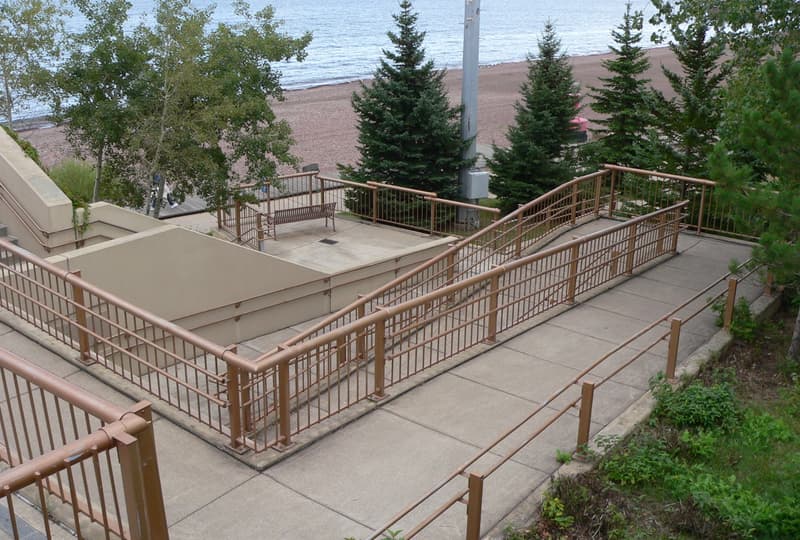
Ramps provide access from downtown businesses down to Duluth, Minnesota Lakewalk along Lake Superior
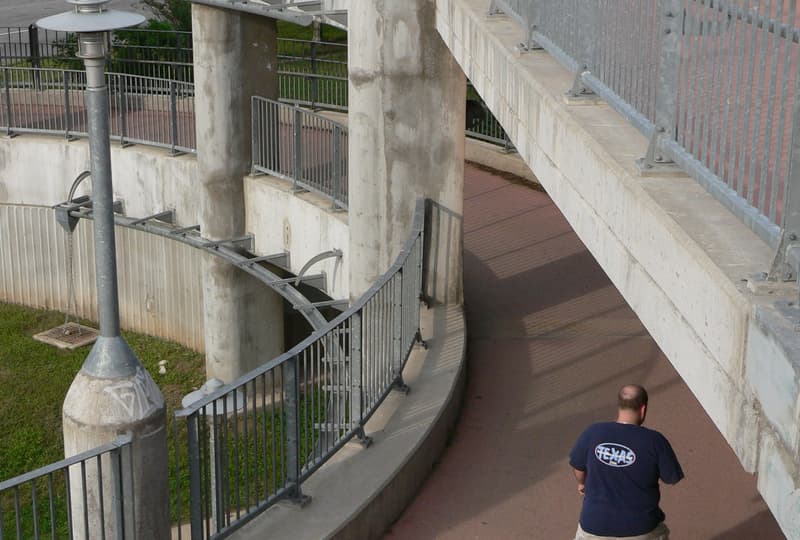
Circular ramp leads runners, strollers, and cyclists from Pfluger Bridge down to trail on north side of Lady Bird Lake (formerly Town Lake), Austin, Texas
Sustainable Trail Bridge Design
posted Oct 7, 2021
Designing trail bridges based on trail-specific Trail Management Objectives (TMOs) is essential for providing the desired trail experience, for ensuring user safety, and for maximizing bridge longevity.
posted Jun 15, 2020
Guidelines for accessing, designing, and building launch sites for carry-in watercraft.
Steel Trail Bridges on Shared-use Urban Pathways
posted Oct 24, 2019
A variety of steel-frame commercial bridges along typical multiple-use trails.
Getting Real with Preservative-Treated Wood for Trail Structures
posted Jun 11, 2019
Wood is sustainable and renewable. We can extend the life of wood far beyond the time it takes to grow a new tree.
3,284 views • posted 11/05/2019